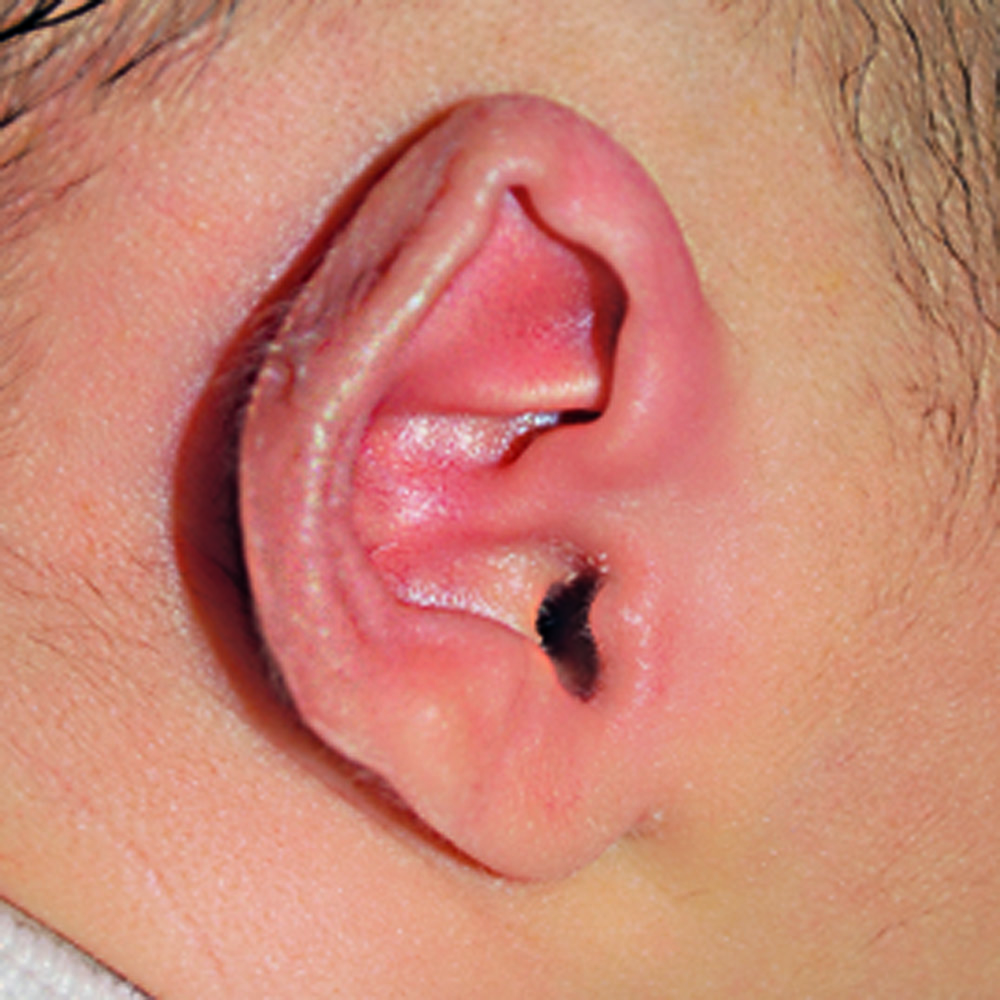What are the types of infant ear deformities and malformations?
Ear deformities
SCROLL
Arten der Deformation und Fehlbildung
Ear deformities
SCROLL
Infant ear deformities are often a result of pressure forces in the uterus. Most commonly affected are the helix (the bead-like thickened edge of the auricle) and the anthelix (also called the ear or arched bead on the front of the auricle). These malformations are divided into non-impairing anomalies (e.g. protruding ears or colloquially sail ears) and more pronounced malformations (e.g. cauliflower ears) and dysplasias of higher degree (e.g. microtia °III). While purely cosmetic malformations are mainly important for social integration, the others also involve disorders of ear function.
Where do ear anomalies come from?
A large proportion of congenital ear anomalies are due to the position of the ear in utero. It is therefore not uncommon for newborns to have temporarily folded, malformed ears – approximately one-third of all infants are affected. One speaks of such a deformity when no tissue is missing. On the other hand, such an appearance is classified as a true deformity when there is some degree of missing skin and/or cartilage. Other ear abnormalities may be the result of a genetic mutation that affects nearby bones, nerves, cartilage, and muscles, and may also affect other systems of the body (e.g., Goldenhar syndrome or CHARGE syndrome).
How can these ear deformities be treated?
Irregularly shaped ears can be treated in newborns without surgery in many cases. This treatment is more successful the softer and more malleable the ear cartilage is. Ear pinning techniques become less effective after the eighth week of life at the latest, and starting treatment is recommended as optimal from the second week of life. If this time window is missed, surgery is the only option from the appropriate age. Therefore it is even more important to contact an EarWell® specialist in time to clarify all possibilities!
Here is an overview of the dysplasia classes:
Dysplasie °1: Hier sind die meisten anatomischen Strukturen der Ohrmuschel vorhanden, Beispiele sind abstehende Ohren (Apostasis otum) sowie das Tassenohr in den Ausformungen °I und °II.
Lorem ipsum dolor sit amet, consectetur adipiscing elit. Ut elit tellus, luctus nec ullamcorper mattis, pulvinar dapibus leo.
Lorem ipsum dolor sit amet, consectetur adipiscing elit. Ut elit tellus, luctus nec ullamcorper mattis, pulvinar dapibus leo.orem ipsum dolor sit amet, consectetur adipiscing elit. Ut elit tellus, luctus nec ullamcorper mattis, pulvinar dapibus leo.





